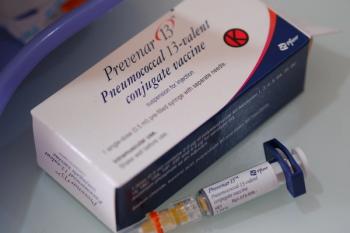
Dupilumab Improves Severe Asthma Symptoms, Switching May Require Eosinophil Monitoring
Real-world study conducted in Japan shows Dupixent (dupilumab) reduced the number of annual severe asthma exacerbations by 53%, there were also adverse events associated with high eosinophil levels in patients who had switched from a different biologic before starting Dupixent.
In 2018, Sanofi and Regeneron Pharmaceuticals were granted FDA approval for Dupixent (dupilumab) as add-on treatment for moderate to severe eosinophilic asthma. The approval was based on positive results from three pivotal randomized clinical trials evaluating the safety and efficacy of Dupixent in adults and adolescents with moderate to severe eosinophilic asthma. Results from the trials demonstrated that Dupixent significantly improved lung function and reduced severe exacerbations compared to placebo. Additionally, Dupixent reduced the average daily use of oral corticosteroids by a higher percentage than placebo (70% versus 42%).
A study published in the Journal of Asthma and Allergy in April of this year retrospectively evaluated the efficacy of Dupixent in the treatment of severe asthma in a real-world setting. The study, conducted at Jikei University Hospital in Tokyo, looked at 26 adults who received Dupixent treatment for severe asthma from April 2019 through December 2021. The primary endpoints were the change in the number of annual asthma exacerbations and the reduction in the use of oral corticosteroids at the last follow-up as measured in prednisone equivalents.
Of the 26 participants, 16 had switched to Dupixent after having previously used a different biologic for severe asthma treatment.
The study found that Dupixent significantly reduced the number of annual severe asthma exacerbations by 53% and the mean dose of daily oral corticosteroid use significantly decreased by 54%. These real-world results are comparable to those observed in major randomized clinical trials. However, the Japanese study also observed that adverse events associated with high eosinophil levels were more prominent in patients who had switched from a different biologic before starting Dupixent versus those who were biologic naïve before treatment with Dupixent. One patient who changed from Nucala (mepolizumab) discontinued Dupixent treatment due to hypereosinophilia. Another patient, who had been previously using Fasenra (benralizumab), discontinued Dupixent treatment due to a relapse of chronic eosinophilic pneumonia.
Because of these findings, the study authors suggest monitoring eosinophil levels during Dupixent treatment in patients who switch from other biologics. “Compared to biologic-naïve patients, we propose that long-term careful observation for one year be necessary when patients shift biologics from anti-IL-5/IL-5R antibody to dupilumab”, the authors recommend.
This study was a small, single-center, retrospective study. Despite these limitations, the authors believe that the study population adequately reflects a real-world setting in Japan and conclude that Dupixent is effective in the real world in reducing severe asthma exacerbations and decreasing the use of oral corticosteroids in patients with severe asthma.
Reference
Numata T, Araya J, Miyagawa H, et al. Real-World Effectiveness of Dupilumab for Patients with Severe Asthma: A Retrospective Study. J Asthma Allergy. 2022; 15: 395–405. Published online 2022 Apr 1. doi: 10.2147/JAA.S357548
Newsletter
Pharmacy practice is always changing. Stay ahead of the curve with the Drug Topics newsletter and get the latest drug information, industry trends, and patient care tips.





























































































































